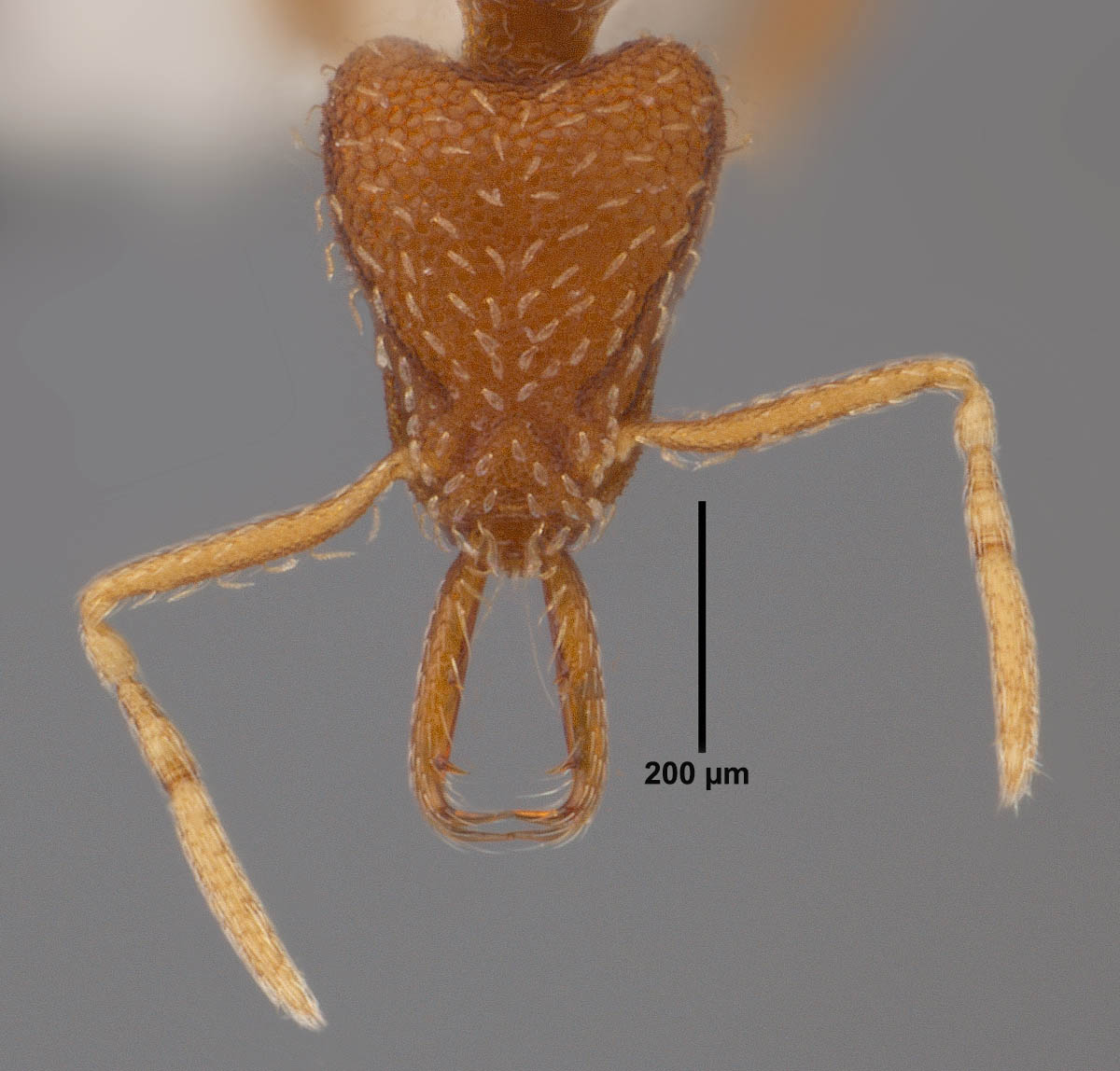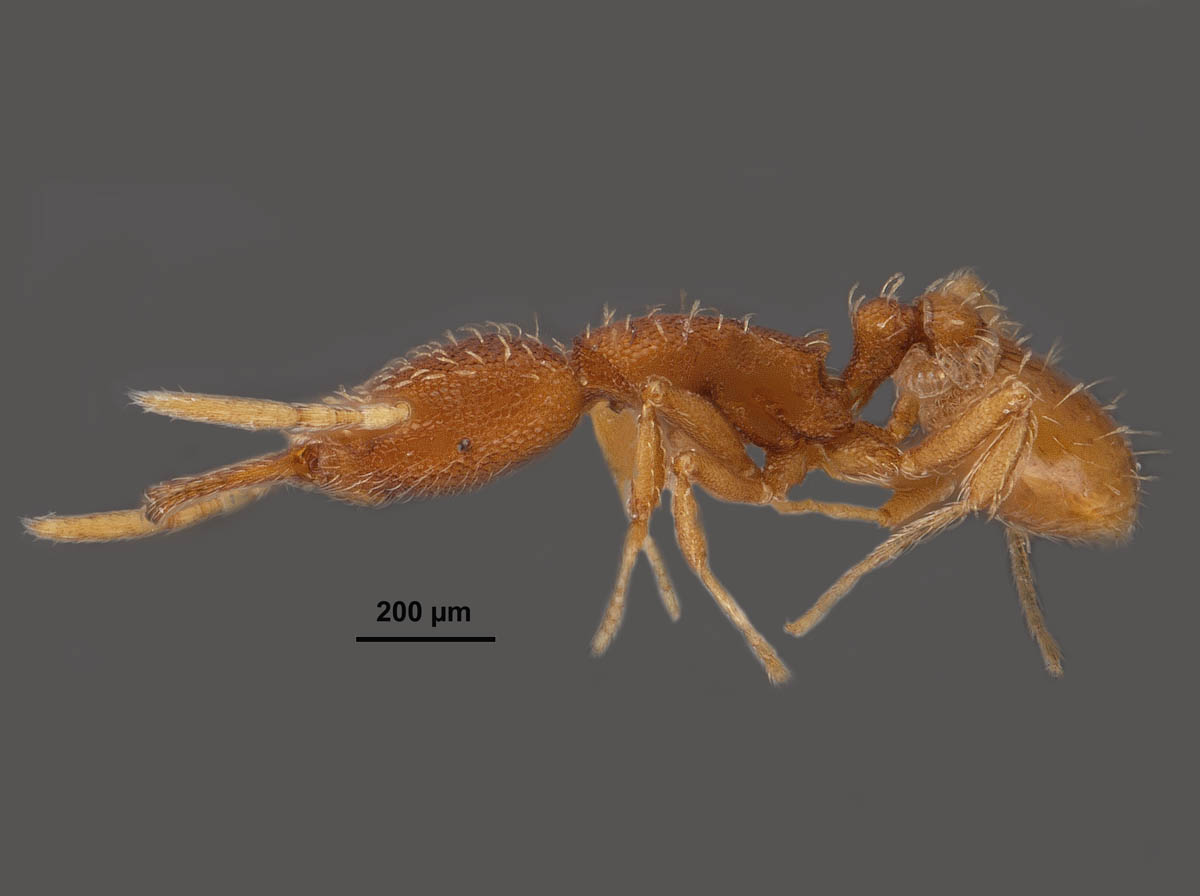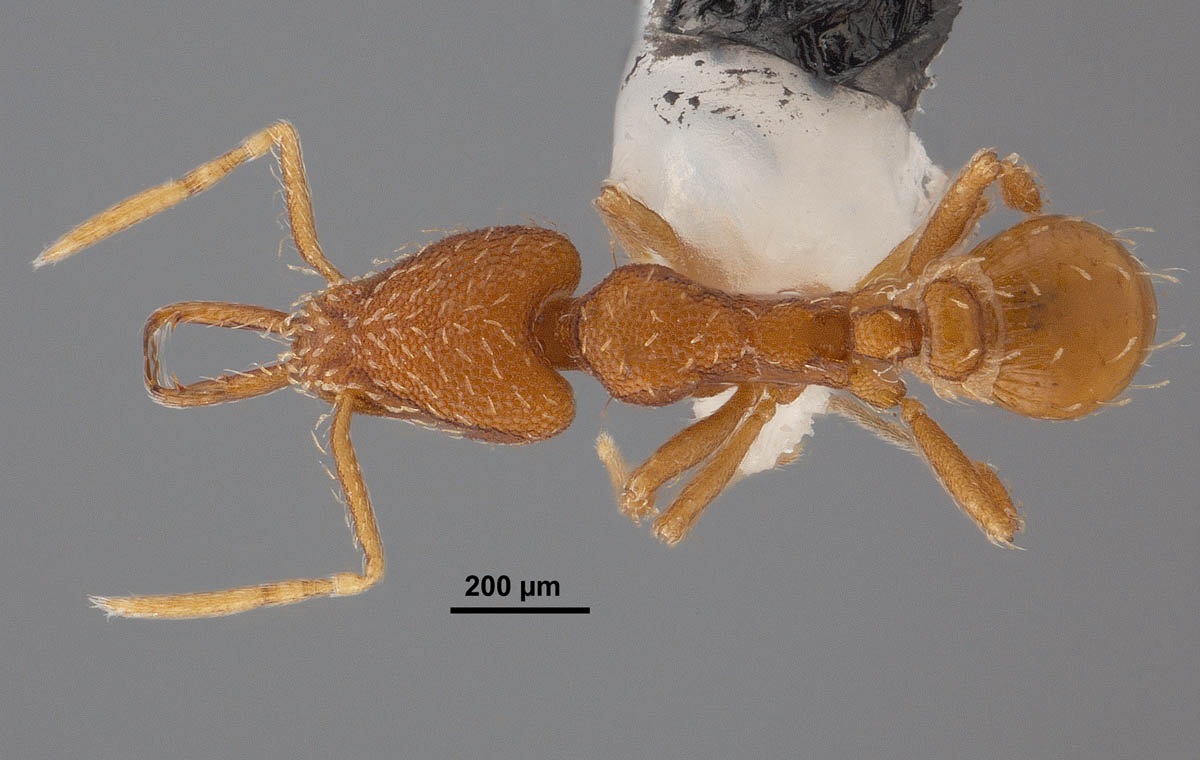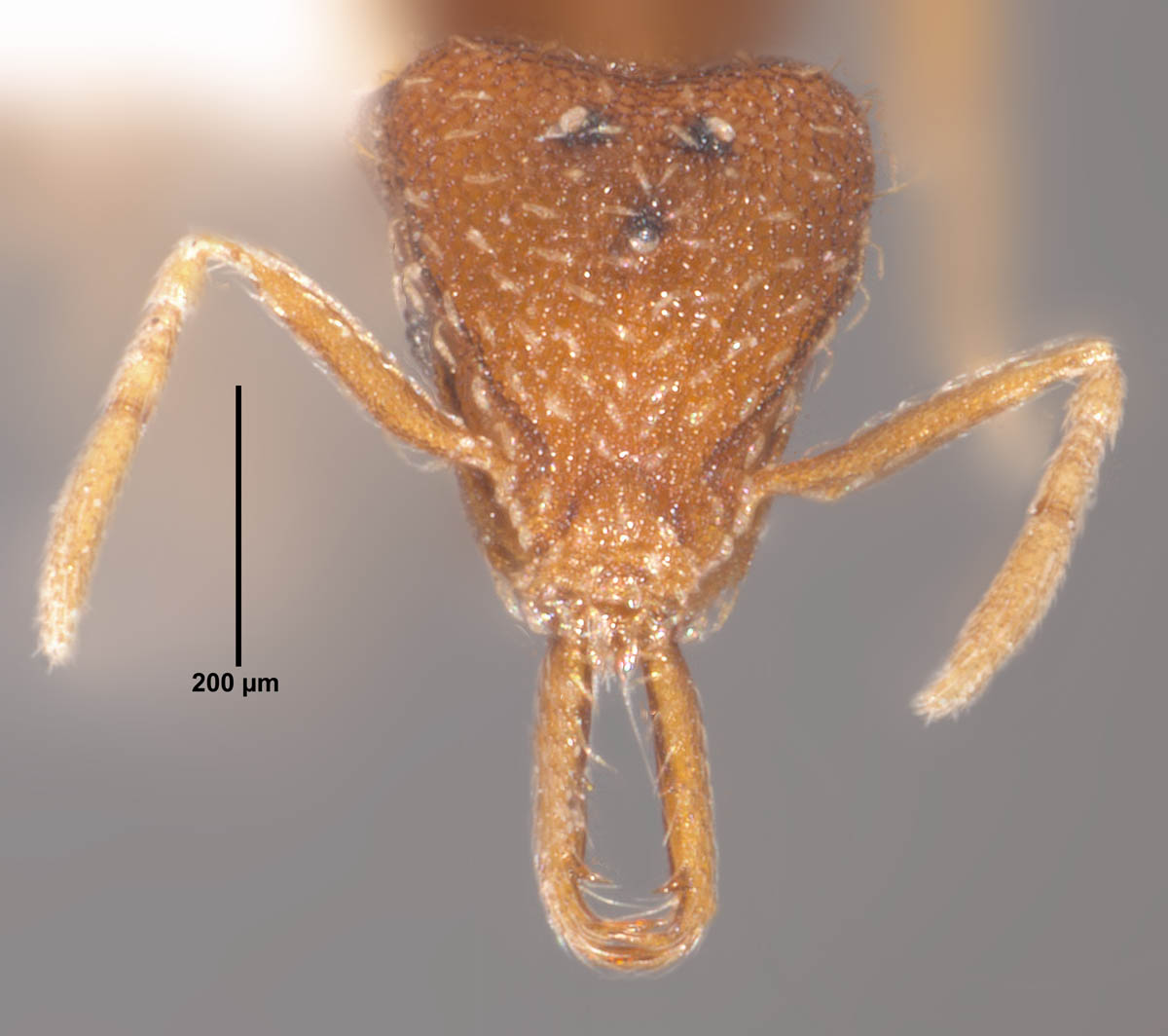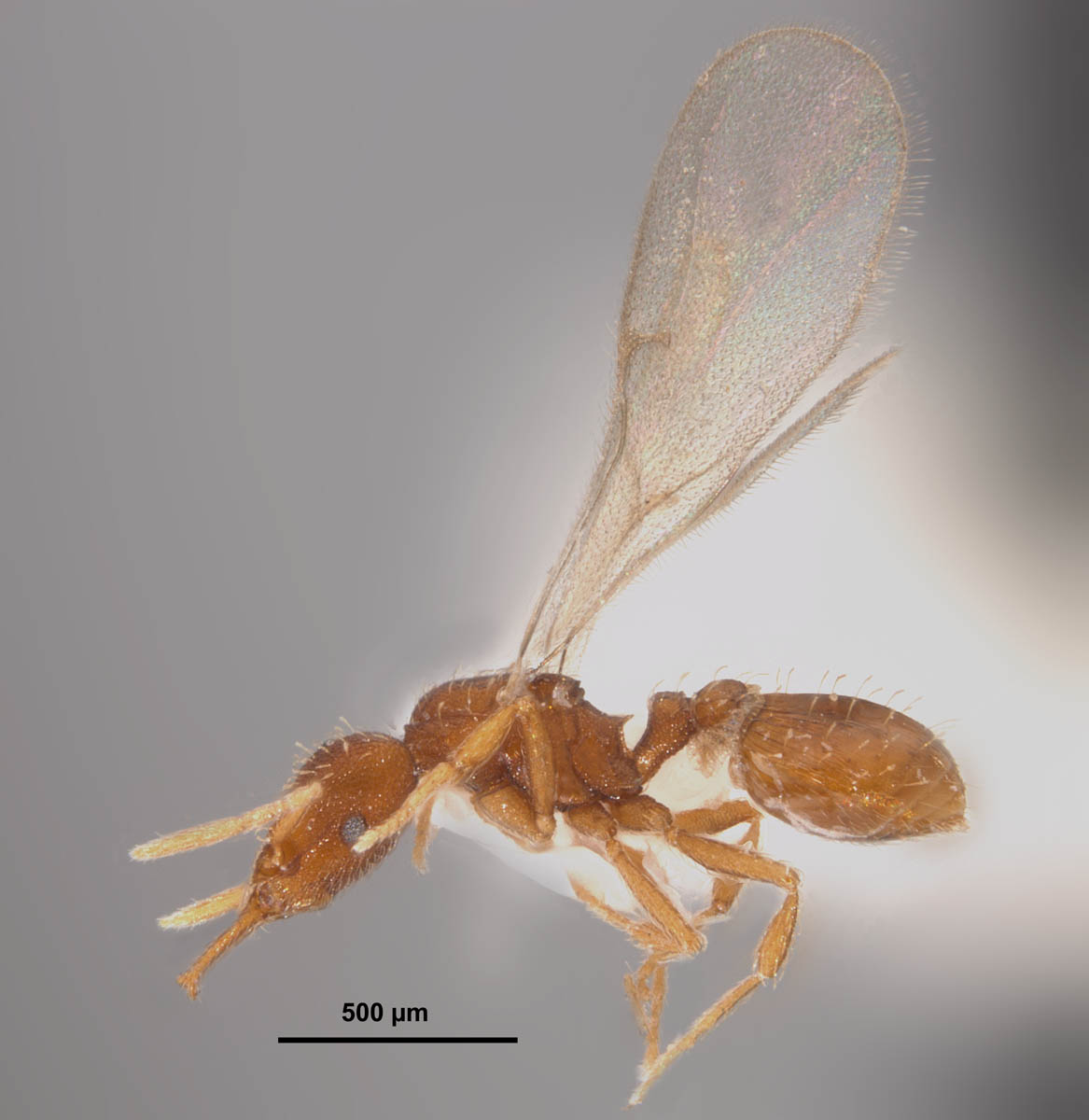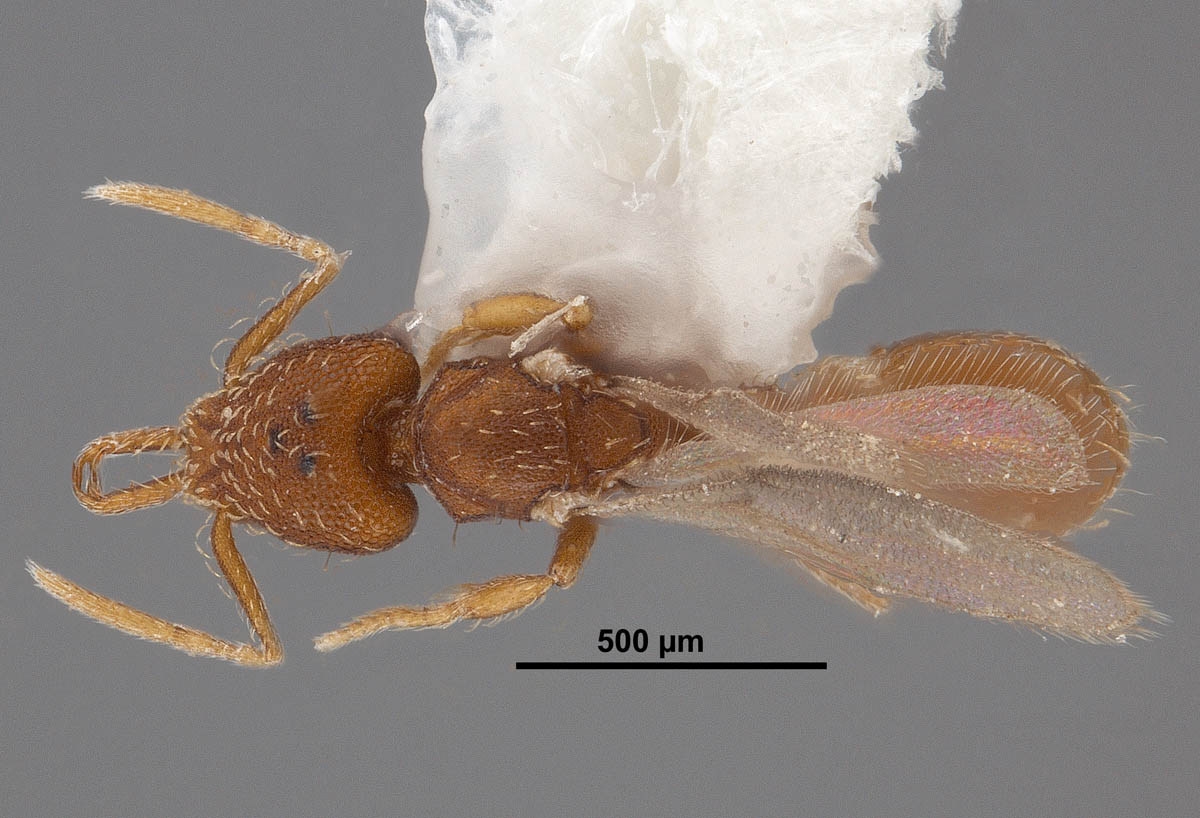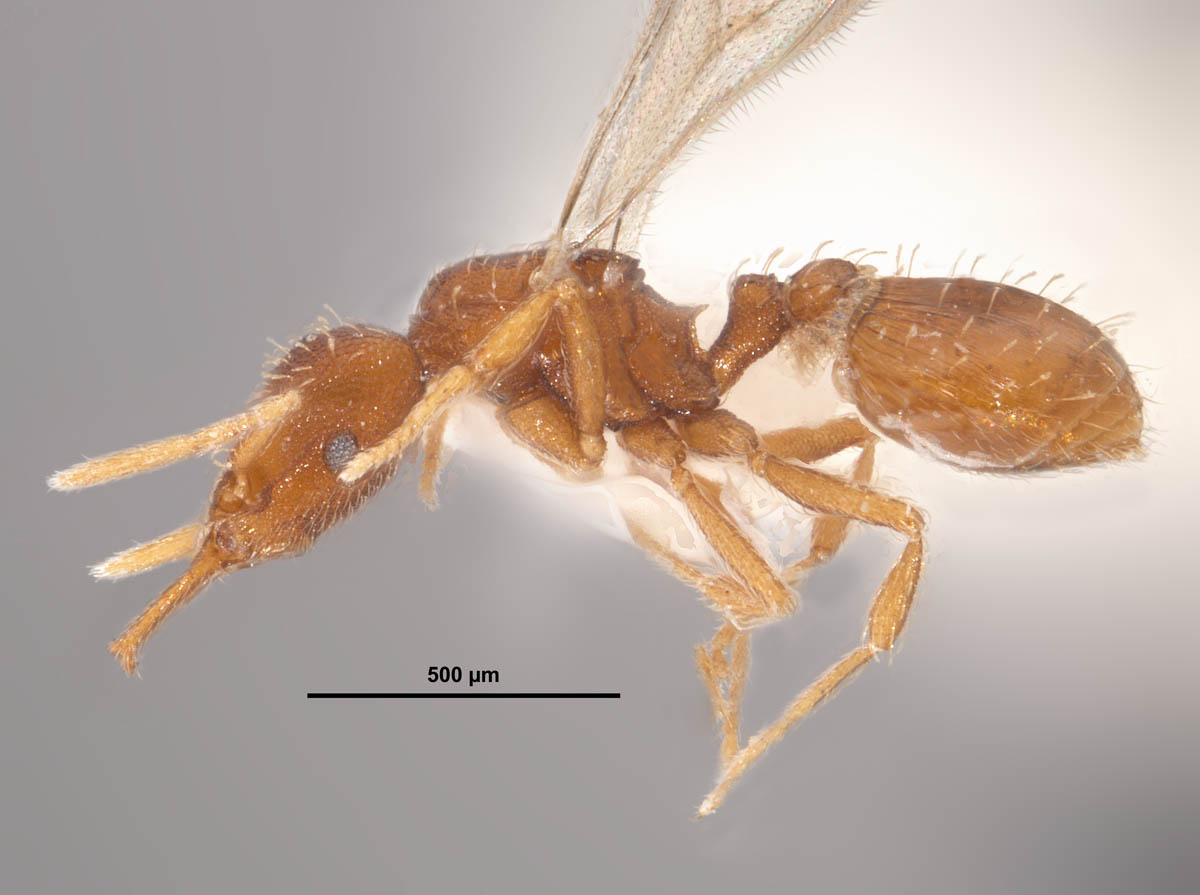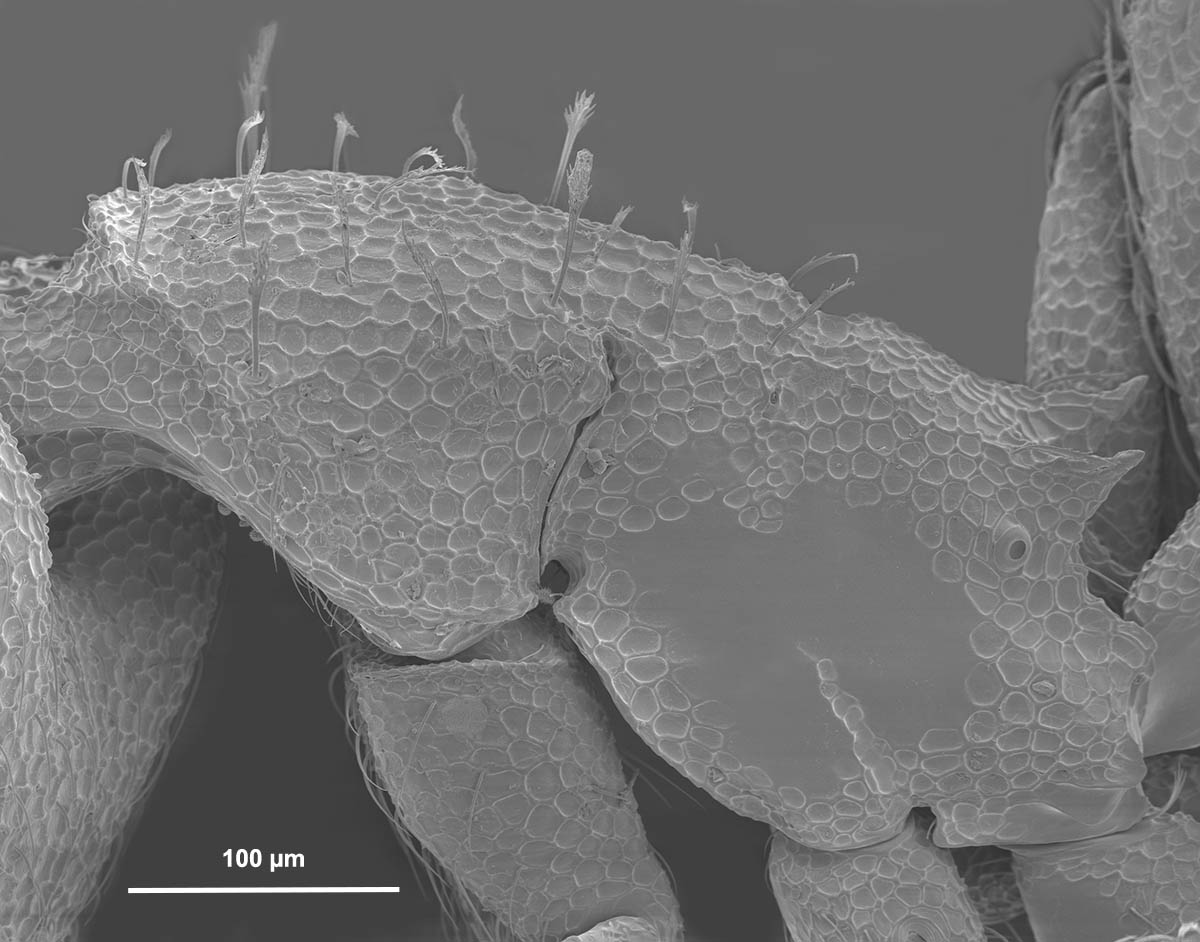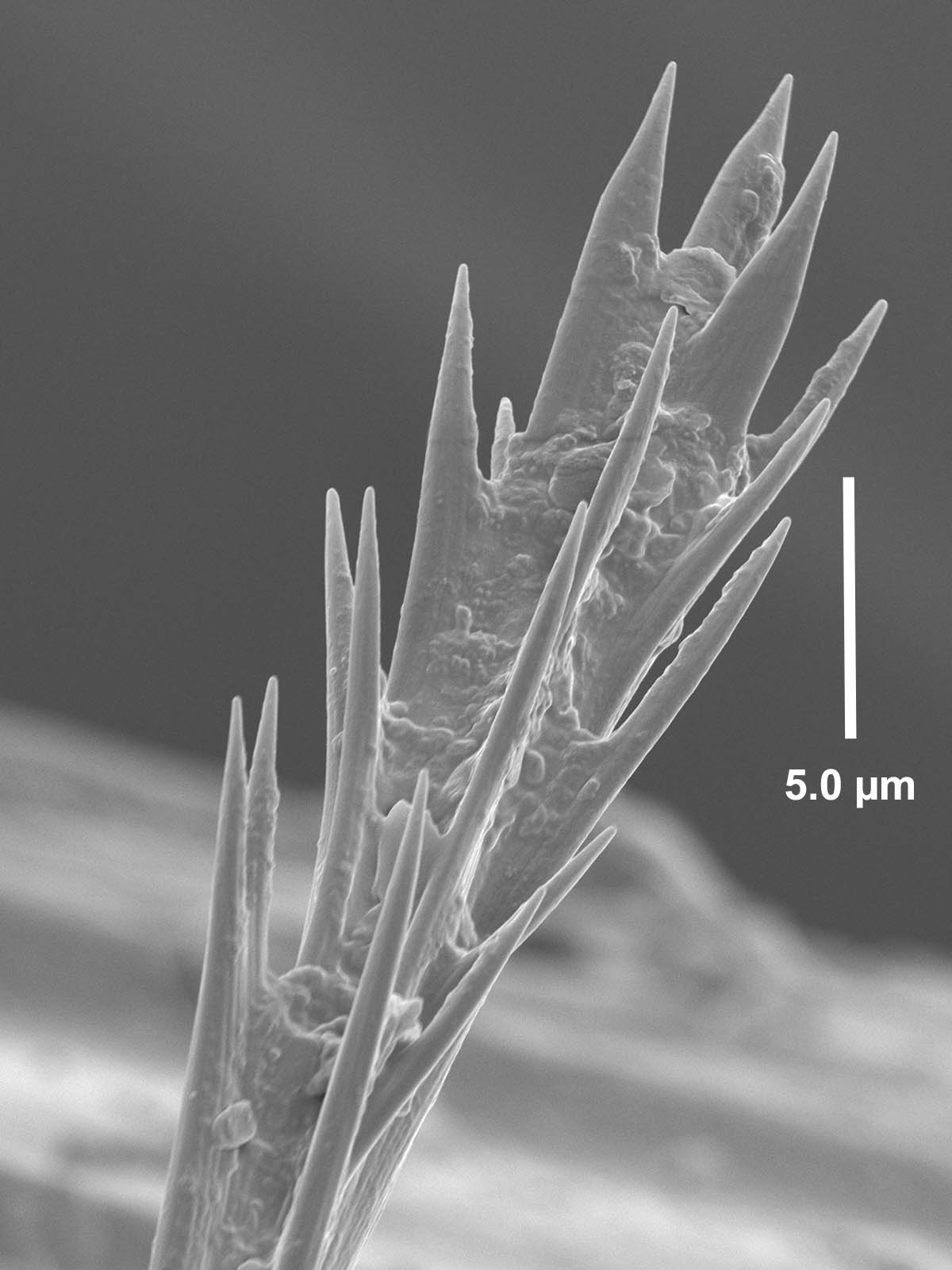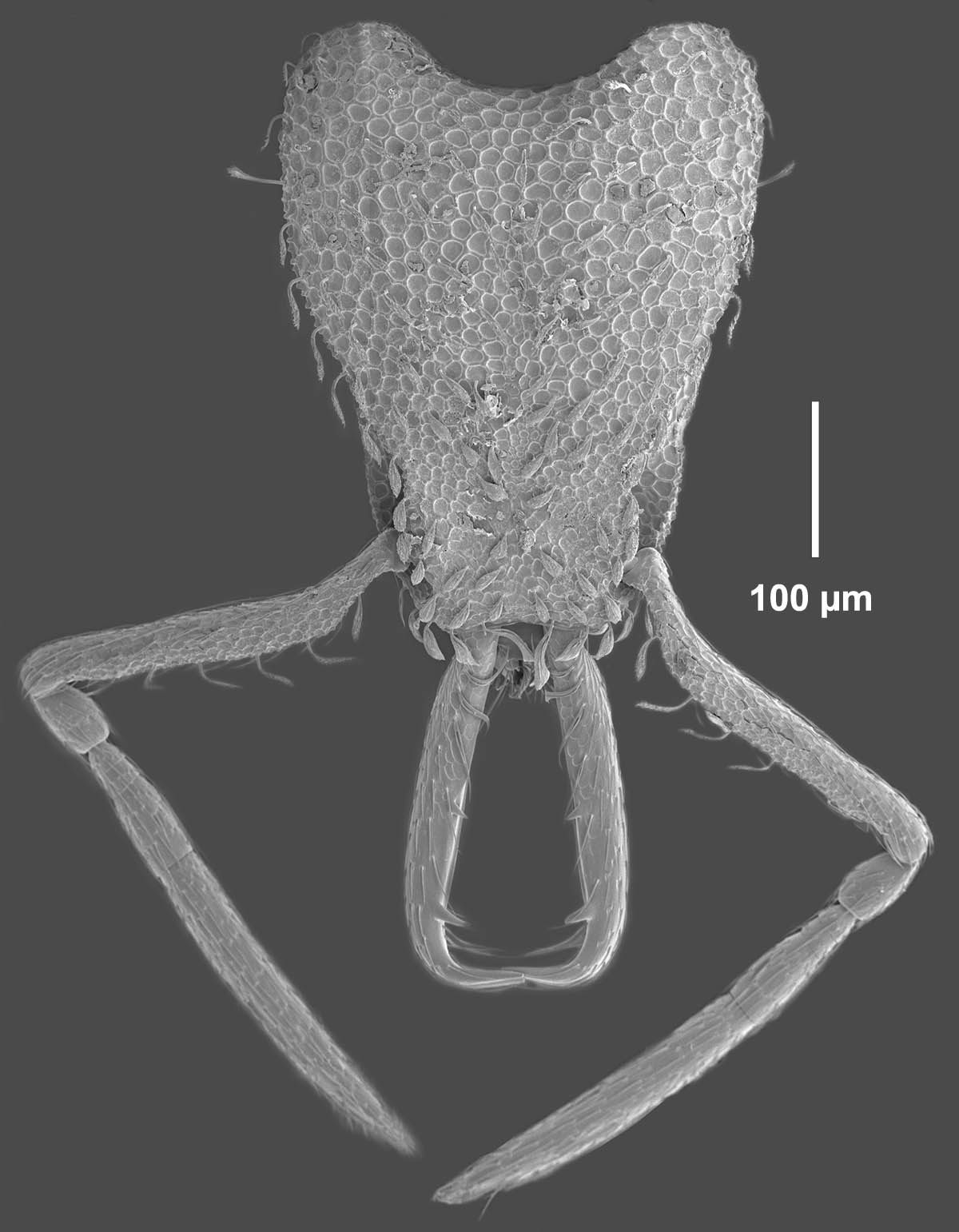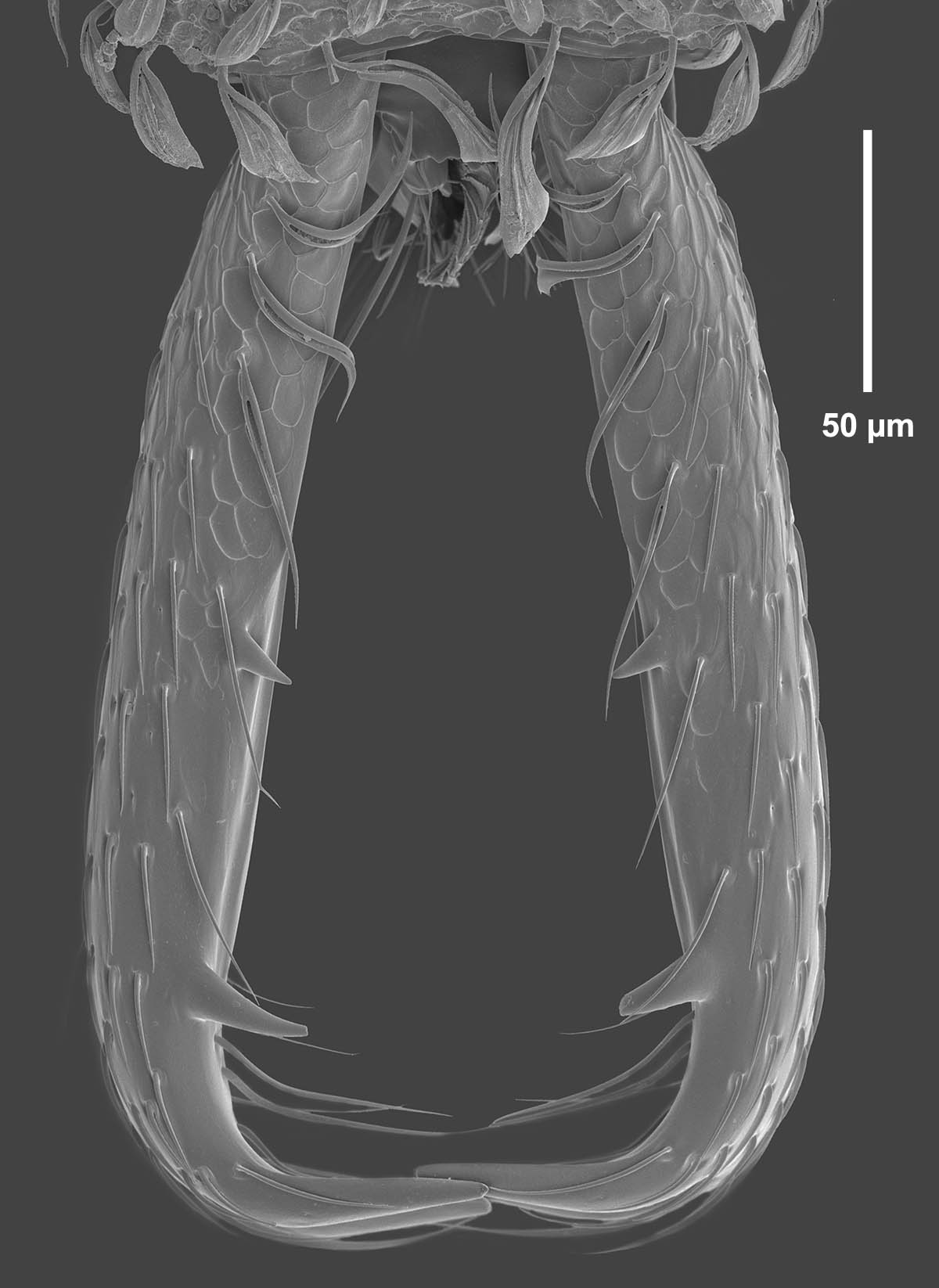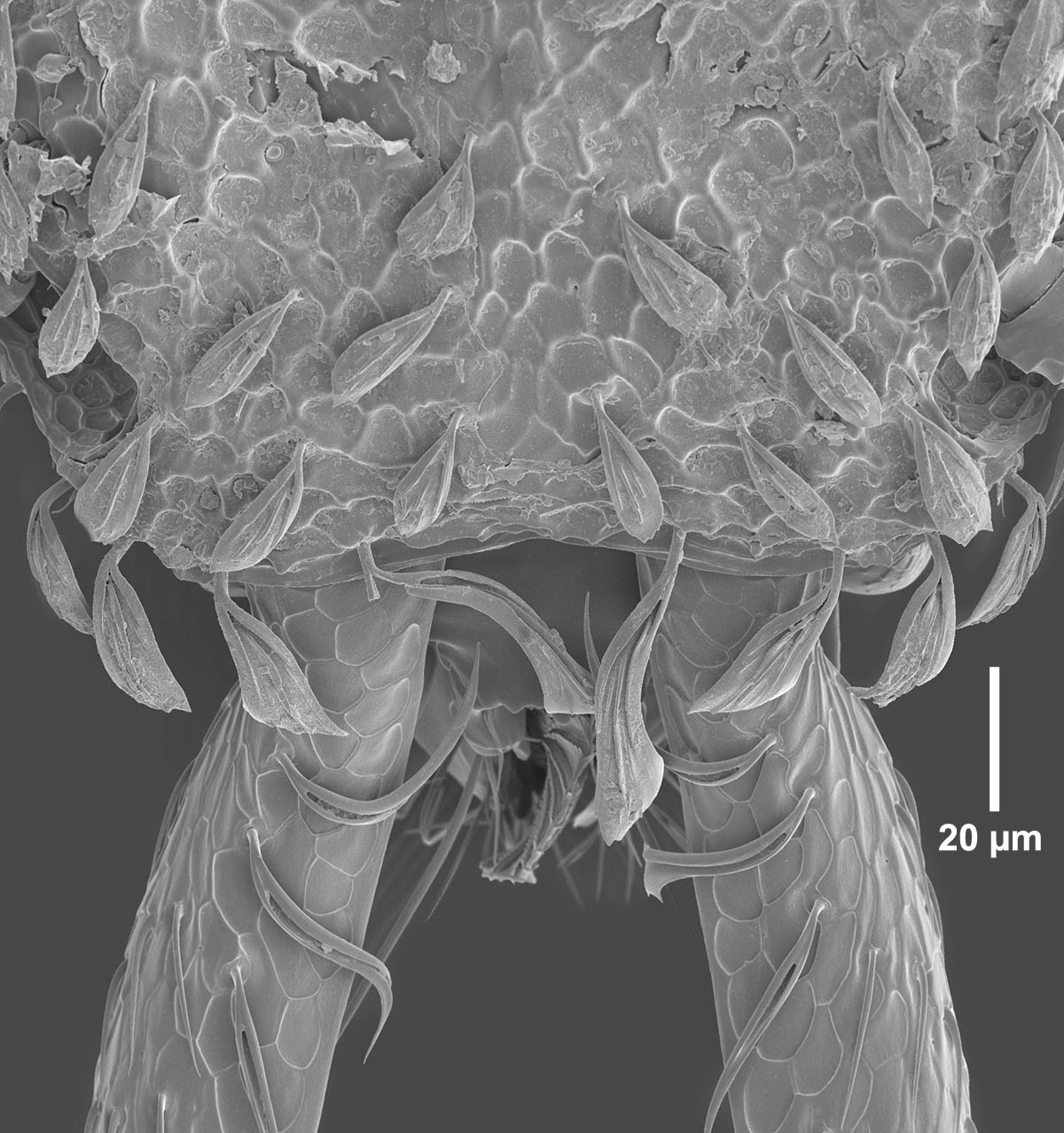Subfamily MYRMICINAE Authors: Joe A. MacGown and Ryan J. Whitehouse |
||
Strumigenys silvestrii, full face view of worker (MS, George Co.) (photo by Ryan Whitehouse and Joe A. MacGown) |
Strumigenys silvestrii, lateral view of worker (MS, George Co.) (photo by Ryan Whitehouse and Joe A. MacGown) |
Strumigenys silvestrii,dorsal view of worker (MS, George Co.) (photo by Ryan Whitehouse and Joe A. MacGown) |
Strumigenys silvestrii, full face view of alate queen (MS, Clarke Co.) (photo by Ryan Whitehouse and Joe A. MacGown) |
Strumigenys silvestrii, lateral view of alate queen (MS, Clarke Co.) (photo by Ryan Whitehouse and Joe A. MacGown) |
Strumigenys silvestrii, dorsal view of alate queen (MS, Clarke Co.) (photo by Ryan Whitehouse and Joe A. MacGown) |
Strumigenys silvestrii, lateral view of alate queen (MS, Clarke Co.) (photo by Ryan Whitehouse and Joe A. MacGown) |
Strumigenys silvestrii, lateral view of mesosoma of worker (MS) (SEM photo by Joe A. MacGown and Richard Brown) |
Strumigenys silvestrii, close up view of a seta found on gastral dorsum of worker (MS) (SEM photo by Joe A. MacGown and Richard Brown) |
Strumigenys silvestrii, full face view of worker (MS) (SEM photo by Joe A. MacGown and Richard Brown) |
Strumigenys silvestrii, mandibles of worker (MS) (SEM photo by Joe A. MacGown and Richard Brown) |
Strumigenys silvestrii, clypeal area of worker(MS) (SEM photo by Joe A. MacGown and Richard Brown) |
Introduction In the US, members of the genus Strumigenys can easily be distinguished from other genera by their minute size; 4-6 segmented antennae; elongate, snapping mandibles; unique and often "bizarre" pilosity, and presence of "spongiform lobes" beneath the petiole and postpetiole (Bolton 1999). Dacetines are predatory ants that generally feed on tiny soil arthropods (Wilson 1953). Most dacetines are small, cryptically colored, rarely forage openly above ground, are slow moving, and become motionless when disturbed. Strumigenys silvestrii is a tiny predatory ant species native to South America. In recent years, this species has become established in the US, especially in the southeastern region where it has been collected in a variety of habitats. Strumigenys silvestrii workers and queens possess extremely elongate mandibles and antennae. Taxonomic History Diagnosis Identification Queen:Minute (HL 0.48 mm, HW 0.38 mm, SL 0.30 mm, EL 0.07 mm, MeSL 0.52 mm) (n=1) (MEM specimen). Minute brown ant, slightly darker than the workers and slightly longer. Entire body reddish brown. Head heart-shaped, widest posteriorly, deeply concave along posterior border; antennal scrobes present on lateral sides of head; entire head with tightly woven foveolate reticulation; clavate scale-like setae numerous on face and margin of head, all setae directed anteriorly; eyes large, located on the ventral side of the antennal scrobe; three ocelli present, often with black coloration around them; mandibles elongate, approximately half the length of the head, with a distinct apical fork followed by a single tooth, with a small denticle located along the inner margin of the mandible at about the midpoint; antennae 6-segmented, scape nearly reaching occipital border, most of the setae along the inner margin of the scape directed toward scape apex except for at least two setae directed toward scape base, apical flagellomere greatly enlarged, and subequal in length to scape. Mesosoma squarish in lateral view, densely foveolate with the meso- and metaplural region smooth; scattered erect, scale-like setae present dorsally; propodeum with two posteriorly directed triangular teeth present. Wings, if present, lacking pigmented veins, stigma absent, with fringe of setae along wing edges apically and on ventral sides of wings to about midway toward base. Waist 2-segmented, with scattered erect, clavate setae directed posteriorly; petiole with tightly woven foveleolate sculpture, peduncle thickened in lateral view, spongiform tissue lacking ventrally, node somewhat rectangular in dorsal view; postpetiole shiny, with spongiform tissue present ventrally and posteriorly, in dorsal view node kidney bean shaped and about twice as wide as petiole. Gaster smooth, shiny, with longitudinal grooves present on anterior portion of first tergite; scattered erect, clavate setae present; sting present. Biology Pest Status Distribution Nearctic: United States (AntWiki.org, MEM). U.S. Distribution: AL, CA, FL, GA, LA, MS, TX (AntWiki.org and MEM). Acknowledgments Literature Cited Bolton, B. 2000. The ant tribe Dacetini. Memoirs of the American Entomological Institute 65:1-1028. Bolton, B. 2013. Bolton World Catalog Ants. Available online: http://www.antweb.org/world.jsp. Accessed 16 April 2013. Brown, W. L., Jr. 1959. The Neotropical species of the ant genus Strumigenys Fr. Smith: group of silvestrii Emery. Studia Entomologica (n.s.) 2:25-30. Emery, C. 1906 ("1905"). Studi sulle formiche della fauna neotropica. XXVI. Bullettino della Società Entomologica Italiana 37:107-194. Wilson, E. O. 1953. The ecology of some North American dacetine ants. Annals of the Entomological Society of America 46: 479-497. Links |
||


